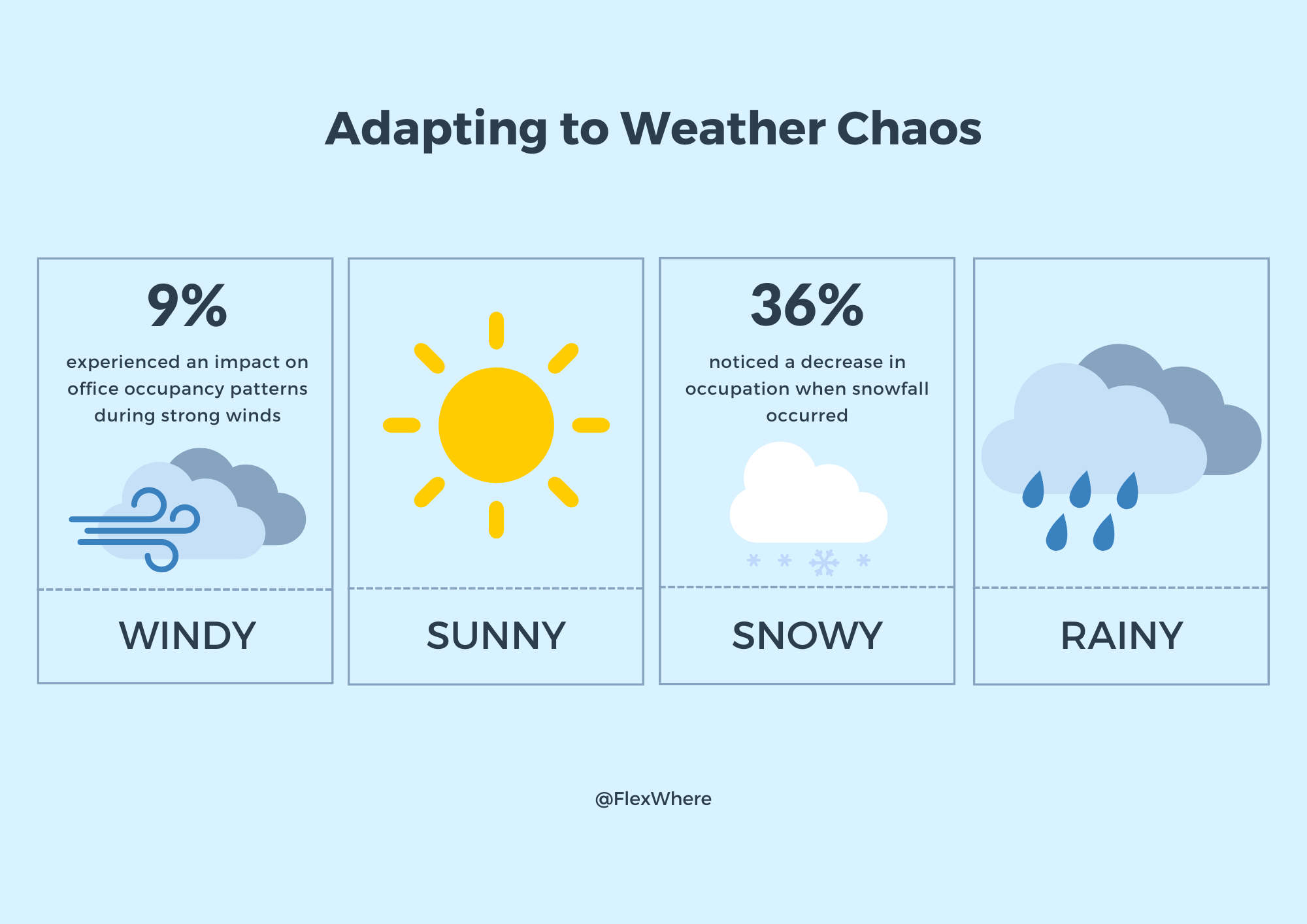
Adapting to Weather Chaos: The Facility Manager's Ultimate Guide!
 Table of Contents
Table of Contents
Weather conditions have always played a significant role in shaping our daily lives, but their influence on our work environments has often been overlooked. A recent research study conducted by FlexWhere sheds light on how different weather phenomena affect office occupancy. We analysed data from 11 of FlexWhere's customers during weekdays, focusing on four key weather factors: snowfall, strong winds, low temperatures, and rainfall. The results are both intriguing and insightful, offering valuable information for businesses and office managers to optimise their operations. So, let's uncover the impact of these weather conditions and discover how you can tackle them like a pro!
Snowfall's Impact on Office Occupancy
Our research revealed that snowfall has a tangible impact on office occupancy. During weekdays, 36% of the customers showed a notable decrease in occupation by 5% or more when snowfall occurred. This finding suggests that snowy weather conditions may discourage some employees from commuting to the office. Factors such as transportation disruptions, potential safety concerns, and general inconvenience likely contribute to this decrease in occupancy.
Strong Winds and Office Occupancy
Another weather condition analysed was strong winds, defined here as wind speeds exceeding 35 km/h. The results showed that 9% of the customers experienced an impact on office occupancy during such conditions. While this percentage is lower than that of snowfall, it still highlights the importance of considering wind-related factors when assessing office occupancy patterns. The reasons for this impact could be related to the comfort and safety of commuting, as well as potential damage to outdoor spaces that employees utilise during work breaks.
Effect of Low Temperatures and Rainfall
Interestingly, the research found that low temperatures and rainfall had no discernible impact on office occupancy. The data recorded a 0% decrease in occupation during these weather conditions. This finding may come as a surprise to some, as one might assume that colder or wetter weather could lead to reduced office attendance. However, it appears that employees were not significantly affected by these specific weather factors, suggesting that they are more resilient or better prepared to deal with such conditions.

Implications and Adaptations
The results of this research present valuable insights for businesses and office managers to adapt their strategies based on weather conditions. During snowy days and periods of strong winds, companies could consider offering remote work options to employees to ensure productivity and safety. Additionally, promoting flexible working hours could help alleviate some of the challenges posed by severe weather.
FlexWhere's features and functionalities can help businesses and office managers make informed decisions during specific weather conditions. By offering remote work options and promoting flexible working hours, companies can ensure productivity, safety, and employee well-being during adverse weather situations. FlexWhere's ability to optimise office space usage further enhances its value in adapting to unpredictable weather-related challenges.
























%20(1).png)



